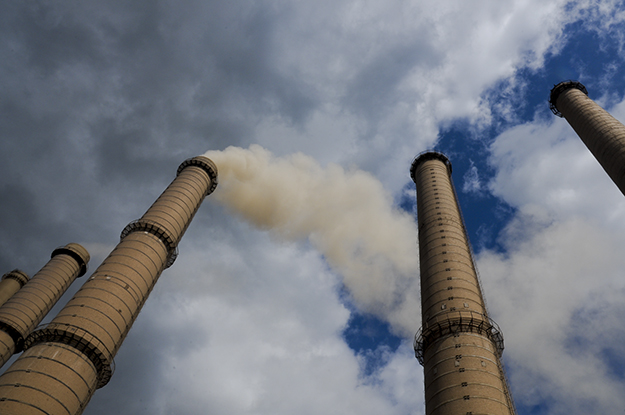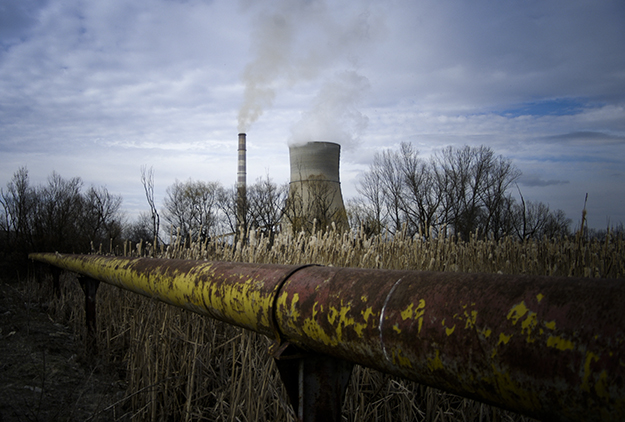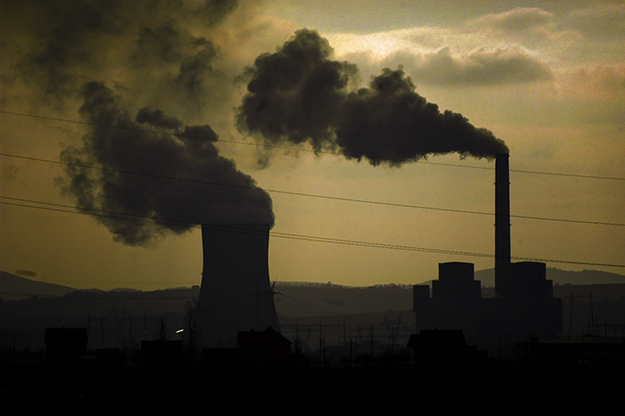“Kosovo faces energy collapse” was the rather alarming news that emerged toward the end of last week and which, surprisingly slowly, picked up pace in the following days. Despite the revelation that the country’s coal reserves were down to just two weeks, it took a while for this apparent bombshell to really be digested, with attention initially distracted by the protracted political mudslinging that has dominated the news and social media feeds of late.
Energy is one of those areas that rarely tends to get people’s juices flowing, not least because it can be such a complex field to get your head around. But with 21st century economies fundamentally relying on energy supply to function, on the face of it the idea of an ‘energy collapse’ would be a national disaster, the implications of which are hard to comprehend.
On Wednesday (August 2) hundreds of employees of KEK — the state-owned Kosovo Energy Corporation that is responsible for producing energy and mining coal — took to the streets of Prishtina to protest against what they foresaw as being big energy price increases and regular blackouts. Then, later that afternoon, KEK announced that a short-term solution had been found, and that just like that, the ‘crisis’ was over — for now.
So, was Kosovo really teetering on the edge of an energy catastrophe? Is everything now fine? Or is there a chance that prices may yet go through the roof and blackouts will follow?
K2.0 consulted energy experts, media coverage, strategies and the legal framework to break the ‘crisis’ down.
Why all the fuss about coal?
Kosovo’s energy supply is overwhelmingly dependent on the burning of lignite (a type of low-grade coal) in the Kosova A and Kosova B power plants in Obiliq. Ninety-seven percent of all energy produced in Kosovo comes from this source, so if coal reserves run out, Kosovo will essentially no longer be able to produce energy.
Planning has also long been underway to develop a new Kosova e Re power plant to help meet Kosovo’s energy demands, although timescales for this project keep slipping. The new power plant would also depend on coal.

Kosovo’s domestic energy production currently comes from burning lignite in the Kosova A and Kosova B power plants in Obiliq. Photo Atdhe Mulla / K2.0.
But Kosovo’s running out of coal?
No, Kosovo has more than 14 billion tonnes of the stuff, the fifth largest lignite reserves in the world. It’s spread across three known ‘coal basins,’ the Dukagjini basin, the Drenica basin and the Kosovo basin. The latter, close to Prishtina, is by far the largest at 850 km2 (although according to Kosovo’s Mining Strategy, just 300 km2 of this is “productive”).
If Kosovo has coal, what’s the problem?
The problem isn’t the availability of coal, it’s accessing it. Much of the coal lies within — or technically beneath — private property such as villages. This means that the only way of getting to the coal is by displacing people from their homes and land.
Kosovo’s only active coal mine is the ‘New Mining Field’ (or Sibovc Southwest) open cast mine in the Municipality of Obiliq but KEK says that it has now reached the edge of where it can safely mine due to the bordering settlements.
Previously KEK intended to expand the mine in the direction of Hade village, and an action plan was drawn up to resettle much of the village. However the process was mishandled, angering local residents and civil society groups, who argued that the rights of local people were being violated.
More recently, for reasons that remain unclear, KEK decided to focus its efforts instead on extending the mine in the direction of the nearby Shipitulla village. However here there are also houses and privately owned land in the area KEK says it needs to access.
It is still unclear exactly how many people may potentially be affected by the intended expansion of the mine toward Shipitulla — Reuters reports that three years ago, when KEK told homeowners it needed their land, there were 99 houses but that 120 houses have been built in the meantime. There have been various numbers mentioned during the most recent ‘crisis’ though, with KEK saying that eight houses were in the initial zone that it needs access to.
Errr, shouldn’t somebody have been keeping an eye on this and noticing that they were running out of accessible coal a little bit earlier?
Yes. Most countries have robust energy plans in place, which allow them to forecast their short-term, medium-term and long-term energy needs and plan for any potential shortfalls many many years in advance. However here the situation has been a little more haphazard.
However it’s not as though the issue had been completely forgotten about. KEK reports annually to the Ministry of Economic Development. In its annual report for 2016, it highlighted that it wasn’t able to seek the necessary reserves in Shipitulla, due to obstacles with expropriation, adding that it had addressed its complaints to relevant institutions and that the delayed actions could result in the supply of Kosovo’s coal stopping by the second half of 2017.
There are also allegations from local residents and from the new Statutory Trade Union of KEK that there is serious foul play involved.
More recently, on June 19 this year, the executive director of KEK, Aben Gjukaj, sent a letter to the Municipality of Obiliq, as well as relevant actors in the government such as the Prime Minister’s Office, warning that problems with illegal construction and the expropriation process in Shipitulla would lead to the stopping of energy production.
On July 14, KEK also sent an official request for the expropriation of eight houses to the Ministry of Environment and Spatial Planning. In a written answer to Klan Kosova, the ministry said that the same proposal was also sent last year (July 17, 2016) by KEK to the government, which on July 21, 2016, took the decision to approve KEK’s request for a review.
It is unclear what happened at this stage, but essentially, everyone has been trying to pass the blame onto somebody else.
OK, that all sounds like a bit of a mess.
That’s not the only thing. Anticipating that this whole area could be important for Kosovo’s energy future, the government in 2009 designated a 150 km2 area around Obiliq as an Area of Special Economic Interest, known as ‘New Mining Field’ (not to be confused with the name of the open cast mine). It reconfirmed a designation that had already been made by UNMIK in 2004, and coupled with the Spatial Plan for this area that was approved in 2011, gives the government significant power to expropriate land needed to meet the country’s energy demand.
However the whole thing has a political dimension.
According to an investigative article published by BIRN’s Jeta ne Kosove (JNK) last year, 56 hectares within this area were privatized by the Privatization Agency of Kosovo in 2012. Since the land had been designated an Area of Special Economic Interest, it should not have been privatized, and no further development should have taken place.
JNK reported that the state received 370,000 euros from the sale of these properties, but KEK may need to expropriate them all back in the future for the needs of supplying the existing power plants, as well as the proposed Kosova e Re. In that case the state would need to buy them back for a sum of up to 3 million euros. When the Privatization Agency of Kosovo was asked by JNK last year if it had been informed that lands were within the Area of Special Economic Interest, and if the privatization of lands in that area was allowed, it did not answer the questions.
There are also allegations from local residents and from the new Statutory Trade Union of KEK that there is serious foul play involved. They say that many of the new houses that have appeared in recent years — illegally — were built by people with political connections as a way of earning significant money from expropriation compensation payments.
Although promises were made in 2014 to draw up a Resettlement Action Plan for Shipitulla, K2.0 has found no evidence that such a plan has been produced.
Can’t the government just take the land back?
Expropriation of land is a complicated process and must be done in accordance with Kosovo’s legal framework. According to the Law on Expropriation and the country’s Resettlement Policy Framework, for each project that requires the displacement of citizens, a Resettlement Action Plan must first be produced. This action plan should be made in consultation with the affected community and with regard to international standards to protect basic rights, and should set out how people with property or land in the affected area will be compensated for their losses.
When a Resettlement Action Plan was proposed for Hade in 2008, it took three years to finalize and the whole process was subsequently fraught with delays, frustration and confusion.
Although promises were made in 2014 to draw up a Resettlement Action Plan for Shipitulla, K2.0 has found no evidence that such a plan has been produced. When referring to KEK’s attempts to expropriate property in Shipitulla, spokesperson Skender Bucolli told K2.0 that this was being done within the framework of Kosovo’s Law on Expropriation and the Resettlement Policy Framework, but made no mention of a specific Resettlement Action Plan for this project.
According to the wider legal framework, are people eligible to receive compensation if their houses were built illegally?
Firstly, it’s important to stress an important distinction. Many of the houses in Shipitulla have been there for years and are inhabited by local people who would absolutely be entitled to compensation for any of their property that the state were to expropriate.
However it is many of the houses that were built more recently by people hoping to cash in on the situation that are in question. According to Kosovo’s Law on Expropriation, the owners of any property built illegally are not entitled to compensation, unless they can prove that their property was built at a time when no spatial plan was in place. Whether or not this will be applied remains to be seen. Insajderi contacted KEK asking for the names of the owners of the illegally built houses but KEK did not answer their enquiry.
What about these eight houses that KEK said were immediately in the way? What’s happening with them?
On Wednesday (August 2), KEK’s executive director announced that they had reached an initial agreement to buy two houses that, according to him, will save the country from the energy ‘crisis.’
Agreeing to purchase these houses may have brought KEK some extra time, but without an effective long-term plan in place to secure access to coal reserves, it’s only a matter of time before Kosovo is once again facing the prospect of coal shortages.
KEK’s spokesperson, Bucolli, told K2.0 that they had already reached agreements with 11 families but that the agreements to buy these two houses, specifically from the Grajcevci and Berisha families, were of crucial importance as their properties are located in the immediate vicinity of where KEK stopped working one year ago in order to start negotiations with the inhabitants. Bucolli added that they are also in talks with other owners that were progressing well, but he did not reveal further information on the nature of these negotiations.
If an agreement has been made for these houses, then the energy ‘crisis’ is over, right?
In the short-term, according to KEK — yes.
But even if this is the case, it is only a quick-fix and Kosovo is still far from having a secure energy future. Agreeing to purchase these houses may have brought KEK some extra time, but without an effective long-term plan in place to secure access to coal reserves, it’s only a matter of time before Kosovo is once again facing the prospect of coal shortages.
So if the available coal were to really run out, would this trigger a complete energy collapse?
Not exactly. KESCO (Kosovo Company for Supply of Energy) as the only current electricity supplier in Kosovo, has a public service obligation to ensure the security of electricity supply to customers. If it is unable to secure energy from KEK’s domestic production, it can import from outside of Kosovo. This already happens to some extent, as Kosovo does not currently produce enough electricity to meet its consumption demands.
Energy is traded on international markets, much in the same way as stocks and shares, which means that countries can shop around and import energy at the lowest available price. Often this is done in advance, by countries forecasting their energy needs for the weeks, months and years ahead, which means that a fixed price can be secured. But it can also be used to secure energy at short notice.

When Kosovo’s power plants aren’t able to produce enough energy to meet domestic demand, KESCO already imports energy from abroad. Photo: Atdhe Mulla / K2.0.
Where the energy is imported from all depends on supply and demand — who is supplying excess energy, and what price is being offered; the closest market with a regular surplus is Hungary’s. While it may be fairly inexpensive to import during the summer, when energy use is low and there is often a surplus from elsewhere, it would become significantly more expensive if Kosovo were to be dependent on importing all of its energy through the winter.
Countries in the region are generally unable to meet their increased domestic demand in winter from self-produced energy alone, and there is less surplus energy available on international markets during this time as everyone tries to stay warm. High demand and low supply means increased import costs.
Kosovo also has a reciprocal agreement in place with Albania whereby it imports surplus energy from its neighbor’s hydro-electric dams in the spring — when water levels usually mean that energy supply in Albania is plentiful — and returns an equivalent amount throughout the rest of the year. However due to low rainfall, there has been a widespread drought across much of the Southern Mediterranean this year, meaning Albania has been unable to provide as much energy to Kosovo.
The idea of importing more energy from elsewhere long-term sounds expensive — would it cost me more?
Probably, although it would likely take time to feel the effect as energy tariffs are set annually. For example, if the price of securing energy were to increase now, the earliest that this would be felt by the public in their energy bills would be March 2018 when new tariffs would come into play.
The price of electricity is also regulated by the independent Energy Regulatory Office, which takes into account all sorts of factors including national average income in an attempt to make energy prices affordable to citizens. The government could also choose to subsidize the cost of energy.
As an emergency measure if there were to be a long-term shortage of energy production, the government could also decide to restrict the supply of energy to customers, meaning increasing the planned power cuts that are already a feature in many areas of Kosovo during periods of low energy availability.
Ultimately though, these are all short-term solutions.

The Kosova A and Kosova B power plants are old and heavily polluting, but the state has yet to work out a sustainable long-term energy future. Photo: Atdhe Mulla / K2.0.
What about the long term then?
Kosovo’s government plans to eliminate the problem of electricity supply through the construction of the new Kosova e Re power plant and the overhaul of the Kosova B plant, which was built in the 1980s. Kosova e Re is intended to replace the power production of the 1960s-built Kosova A plant, which in order to help meet European standards, was due to be decommissioned this year — with no readily available alternative though, this will not happen.
Kosovo’s authorities have been discussing the construction of a new Kosova e Re power plant close to the current Kosova B for more than a decade, and has the in principle support of the World Bank, despite the stated policy of this institution that it will only back new coal projects in exceptional circumstances. This year, the Ministry of Economic Development declared that it is in the process of finalizing preparations for the new plant, though it still remains unclear when construction will start.
Meanwhile many sustainable development groups and organizations under the umbrella of KOSID — the Kosovo Civil Society Consortium for Sustainable Development — are opposed to the new power plant, highlighting the negative effects of coal-based power plants on citizens’ health and on the environment. They argue that attention should instead be focused on developing alternative energy solutions, and investing much more time, effort and research on the potential of developing renewable sources.
So this isn’t the last we’re going to hear of Kosovo’s energy issues?
No — this is going to be a major issue for Kosovo for the foreseeable future, that one way or another, the state needs to get to grips with.K
Feature image: Atdhe Mulla / K2.0.





